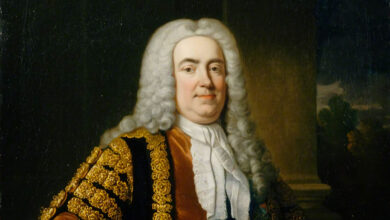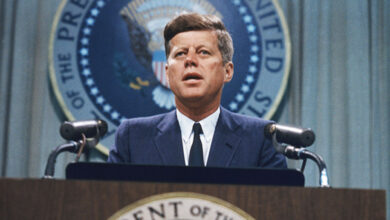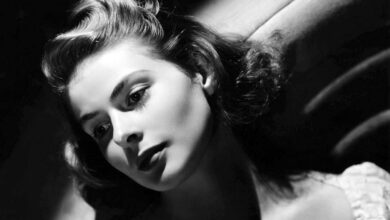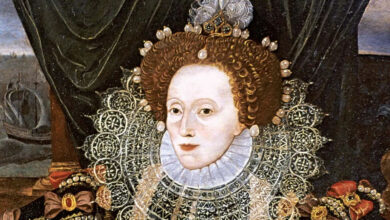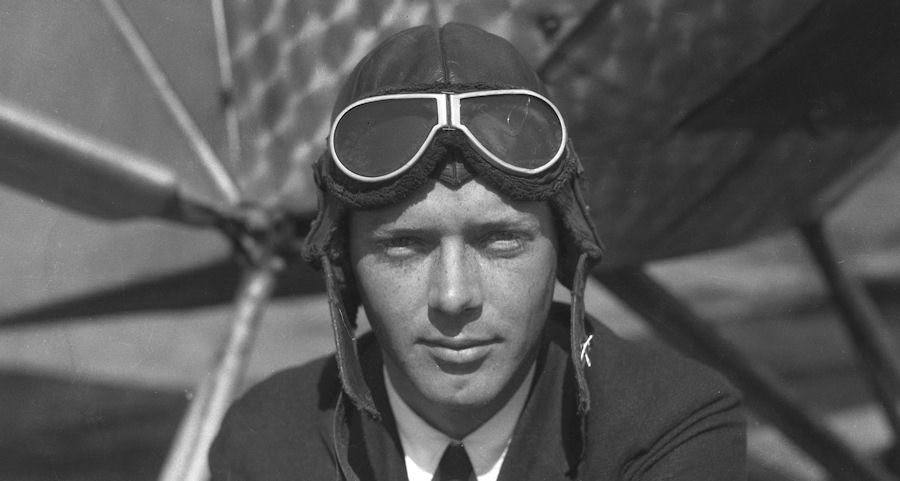 “Flying a good airplane doesn’t require near as much attention as a motor car” – Charles Lindbergh
“Flying a good airplane doesn’t require near as much attention as a motor car” – Charles Lindbergh
Podcast: Play in new window | Download
Subscribe: Spotify | Amazon Music | Youtube Music | RSS
Charles Lindbergh Biography
Charles Lindbergh was born on 4 February 1902 in Detroit, Michigan, USA but grew up in the Little Falls area of Minnesota and in Washington D.C. His father was Charles August Lindbergh, a Swedish immigrant who had arrived in the United States with his parents when he was a small child and went on to become a U.S. Congressman in 1907. His mother was Evangeline Lodge Land, a chemistry teacher who taught at various schools including Little Falls High School where Charles would graduate from in 1918. As his parents separated when he was only nine years old, Charles attended many other schools as he switched between living with his father in Washington and his mother in California. He enrolled in college in 1920 but dropped out before heading to Lincoln, Nebraska where he began flight training in March 1922.
Charles had always demonstrated an interest in all things mechanical, especially motor cars and motorcycles and he soon became interested in flying too. He flew for the first time on 9 April 1922 after he enrolled with the flying school at the Nebraska Aircraft Corporation. Soon after he started to take lessons but needed more money to become qualified enough to fly solo. This he raised by barnstorming, wing walking and parachuting. He first flew solo in May 1923 at a former army training field in Georgia, in an army surplus Curtiss JN-4 “Jenny” which he bought for $500. After a week of practice, he took off for his first long-distance flight of some 140 miles when he headed west to Montgomery in Alabama.
In 1923 he took on the persona of “Daredevil Lindbergh” and spent most of the year barnstorming. During this time, Lindbergh also made his first nighttime flight while at Lake Village in Arkansas. As well as barnstorming he also provided ferry and transport services, flying a doctor on two occasions across the Wisconsin River which was impassable at the time due to flooding. He even flew his father who was running for the Senate to a campaign stop. 1923 didn’t go without mishap though. He broke a propeller on a couple of occasions and even once put his plane into a ditch, an incident that left him grounded for a week while he waited for repairs. Shortly after, he sold the “Jenny” to a student and headed off by train, eventually arriving at Brooks Field on 19 March 1924 where he commenced a year of flight training with the army. He graduated first in his class in March 1925, even though during his time there he had a dangerous near miss when he had to bail out of his S.E. 5 due to a mid-air collision during combat maneuvers. His successful graduation earned him his wings and the rank of 2nd Lieutenant. As the army didn’t need pilots at the time, Lindbergh went back to civilian life but would remain a reserve officer and occasionally flew a few hours for the military after joining the 110th Observation Squadron. He was promoted twice more, achieving the rank of captain in July 1926.
After also previously becoming a pilot with the Robertson Aircraft Corporation in 1925 where he was taken on to devise the route for an airmail contract between St. Louis and Chicago, he became their chief pilot and opened the service on 13 April 1926. He avoided serious injury after bailing out on two occasions, once due to bad weather and once due to mechanical problems, each time after landing, ensuring that the mail was located and sent on to its destination.
In February 1927 he headed off to San Diego, California where he oversaw the design and construction of the Spirit of St. Louis, the plane that would make him famous, after the Ryan Aircraft Company agreed to build it for $10580. It flew for the first time only 2 months later and test flights were made to St. Louis and then to Roosevelt Field on Long Island, New York.
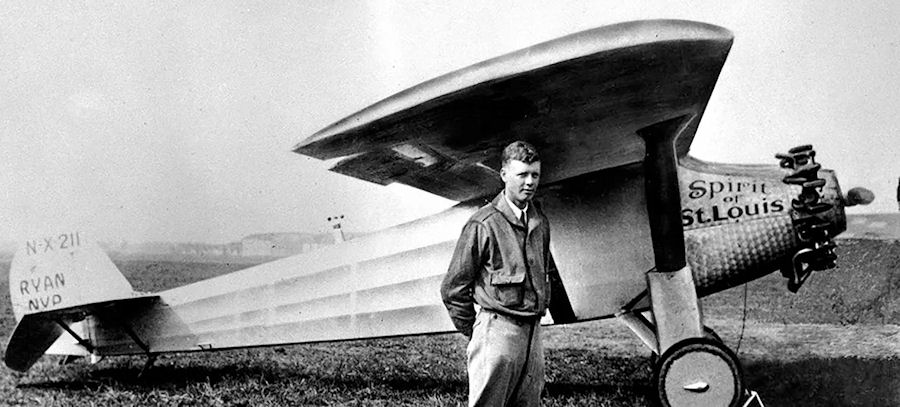 Spirit of St. Louis
Spirit of St. Louis
On 20 May 1927 at 7:40 in the morning, the Spirit of Louis took to the air again, but this time, it was heading out over the ocean bound for Paris, France, a trip of some 3600 miles (5800 km). The flight took 33.5 hours but wasn’t without its problems. The first of these was the slow acceleration due partly to the aircraft’s weight during take-off, as it had 450 gallons of fuel on board, and partly because of the muddy, rain-soaked runway. However, Lindbergh managed to get the Spirit in the air and cleared telephone lines with a mere 26 feet to spare at the end of the runway. Other problems along the way including storm clouds and icing. Lindbergh was also hampered by the fact that he wasn’t particularly good at navigating by the stars and so he used a dead reckoning system, which was complicated by the many variables that can affect such calculations such as wind speed and direction, the weight of the aircraft, height, and airspeed. Nevertheless, at 10:22 in the evening on 21 May Charles Lindbergh successfully landed the Spirit of St. Louis at Le Bourget Aerodrome just outside Paris, where a crowd of some 150,000 people waited to greet him.
Following his historic flight, Lindbergh was treated like a hero. The French flew the American flag, and he was presented with the Distinguished Flying Cross, and later the Medal of Honor by U.S. President Calvin Coolidge when he returned home. On 18 July 1927, he was also promoted to the rank of colonel. On 2 January 1928, he was to be featured on the cover of Time magazine when they made him their first ever Man of the Year. An autobiography, various other books, and a world tour followed.
He became U.S. Ambassador to Mexico in 1927 and during a trip to the country’s capital in December of that year, he met Anne Morrow. The couple were married on 27 May 1929 and went on to have six children together. Charles taught Anne how to fly and she accompanied him on many trips, trips which had the disadvantage of keeping him away from his children, sometimes for months on end.
During the evening of 1 March 1932, one of the children, Charles Augustus Lindbergh Jr. who was only 20 months old, was abducted from his crib at the family home in New Jersey. A ransom of $50,000 was paid but unfortunately, Charles Junior’s remains were found in woods not far from the house. It is this high-profile event which caused Congress to make kidnapping a federal crime in certain circumstances. A 34-year-old German immigrant called Richard Hauptmann was convicted of murder on 13 February 1934 and in April the same year he was executed in the electric chair at Trenton State Prison. The publicity and attention created by the case caused Lindbergh to fear for his family’s safety and for the next few years they lived and traveled around Europe after making their way there by sea under assumed names.
In the late 1930’s Lindbergh made several trips to Nazi Germany at the behest of the United States military. During his time there he met Hermann Goring who presented him with the Commander Cross of the Order of the German Eagle, and his acceptance of it proved a controversial topic back home. Lindbergh was vehemently opposed to the United States entering the war that was to come in Europe and spoke out against the USA potentially being led to destruction in order to protect the interests of what he referred to as the British and Jewish races. A wave of criticism followed and he was accused of being anti-semitic, which he denied, but he also made clear that he believed in the supremacy of the white race as detailed in an article he wrote for Readers Digest where he said “We can have peace and security only so long as we band together to preserve that most priceless possession, our inheritance of European blood, only so long as we guard ourselves against attack by foreign armies and dilution by foreign races”.
In 1941, President Roosevelt, who was outraged by Lindbergh’s outspoken views on his administration wrote to his Treasury Secretary stating, “If I should die tomorrow, I want you to know this, I am absolutely convinced Lindbergh is a Nazi”. After further disagreements with Roosevelt and following a congressional hearing, Lindbergh resigned his commission. He did seek to recommission into the USAAF after the attack on Pearl Harbour, but his request was denied.
Unable to join the military he went to work for Ford in 1942 and then United Aircraft in 1943 and persuaded them to send him to the Pacific theatre as a technical consultant where he would take part in a number of combat missions.
After the war, Charles Lindbergh moved to Connecticut where he worked as a consultant for both the Air Force and Pan Am Airways, and in 1954, President Eisenhower recommissioned him as a brigadier general in the Air Force Reserve.
Although still married to Anne Morrow, in 1957, Lindbergh started secret affairs with three women, two of which were sisters, and with whom he would father seven children between 1958 and 1967. The affairs and the children were miraculously maintained as a secret by Charles and the three women until the truth was revealed by one of his daughters, who had eventually figured out who her father was in the mid 1980’s. She made her findings public after Anne and Charles had both died, and her claims were later validated through DNA analysis.
Charles Lindbergh finally retired to Maui, Hawaii where on 26 August 1974 he died of lymphoma. He was 72 years old.
Podcast: Play in new window | Download
Subscribe: Spotify | Amazon Music | Youtube Music | RSS

